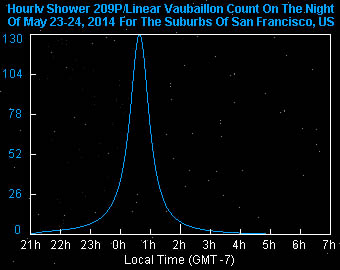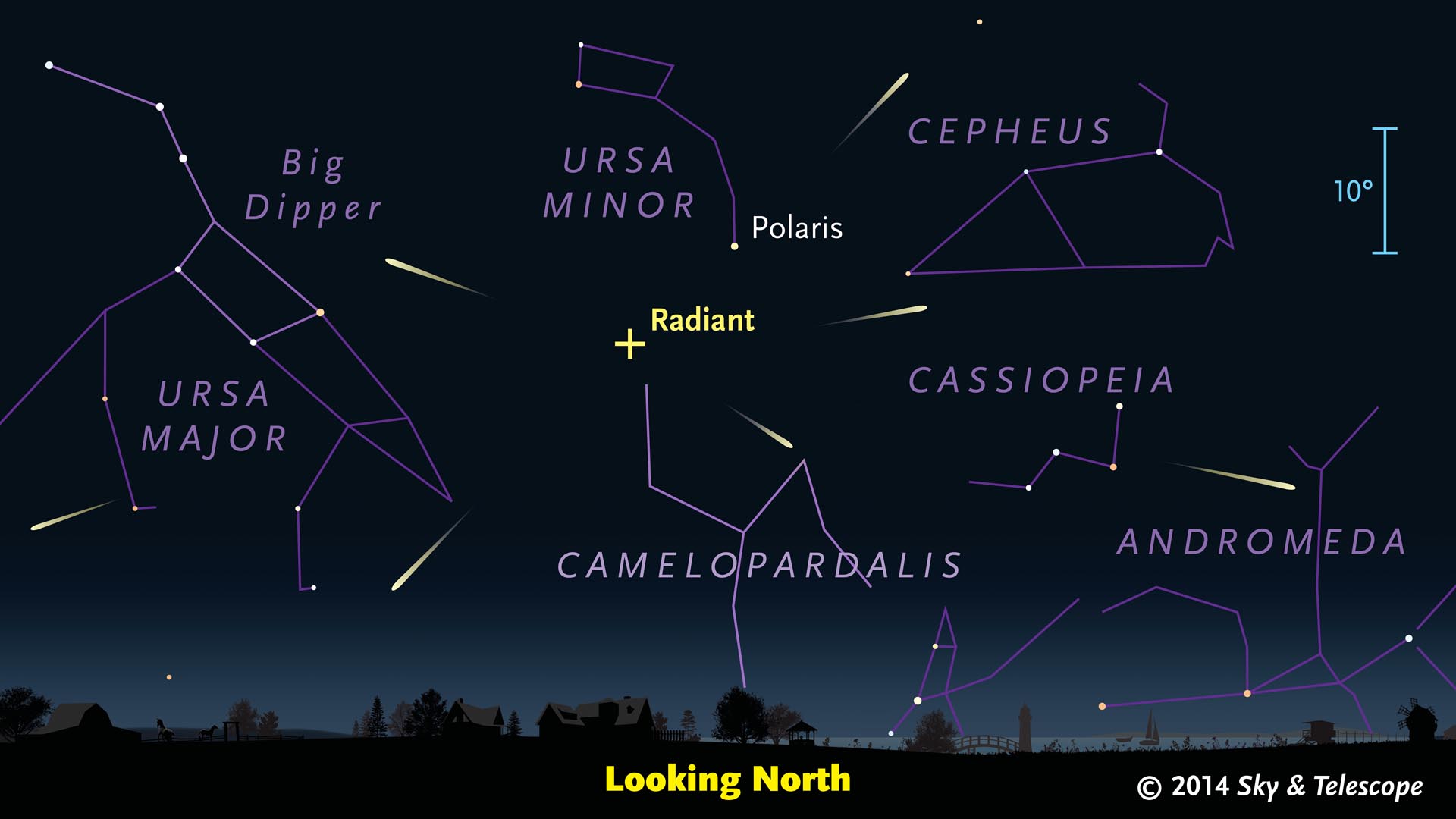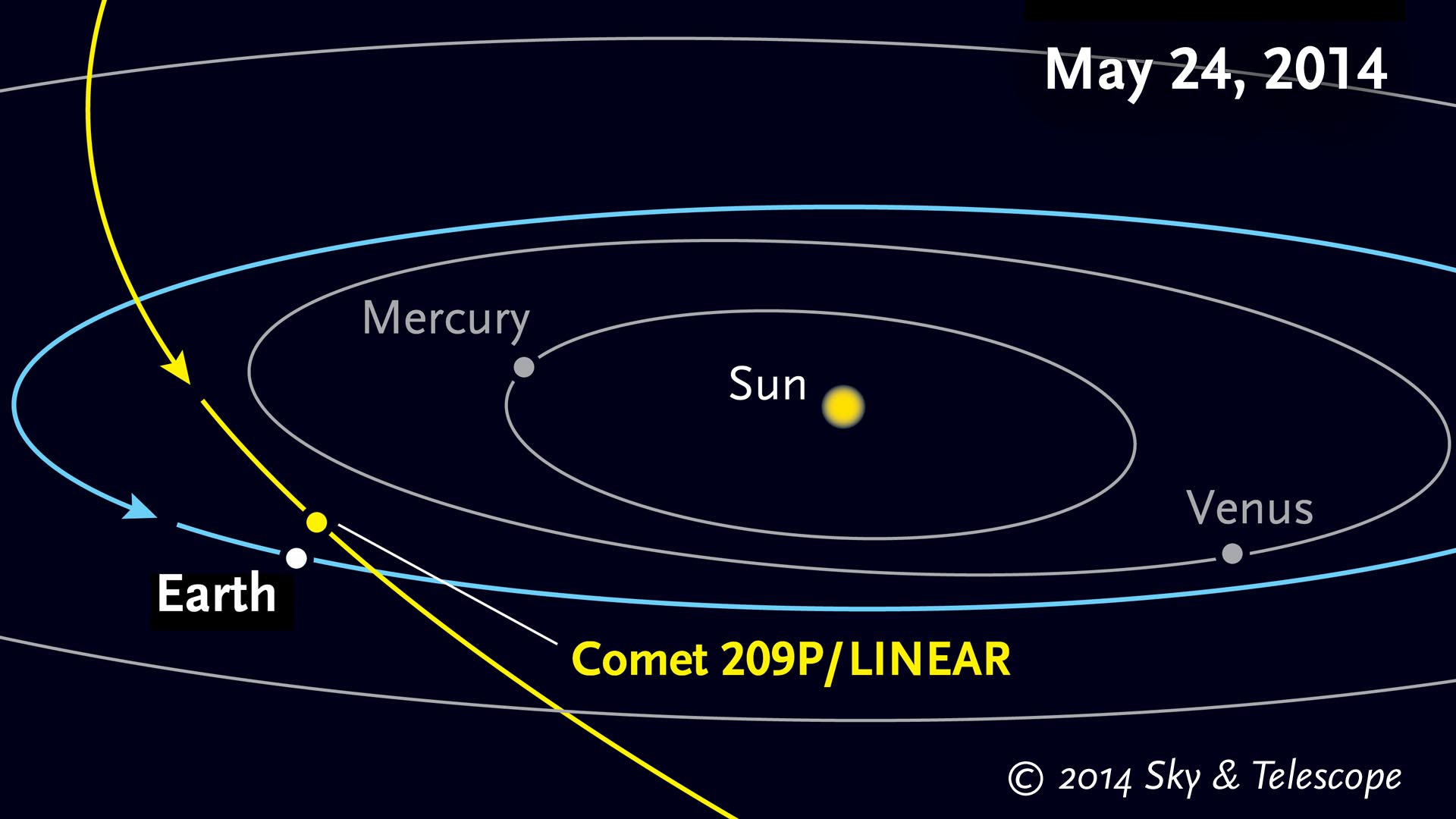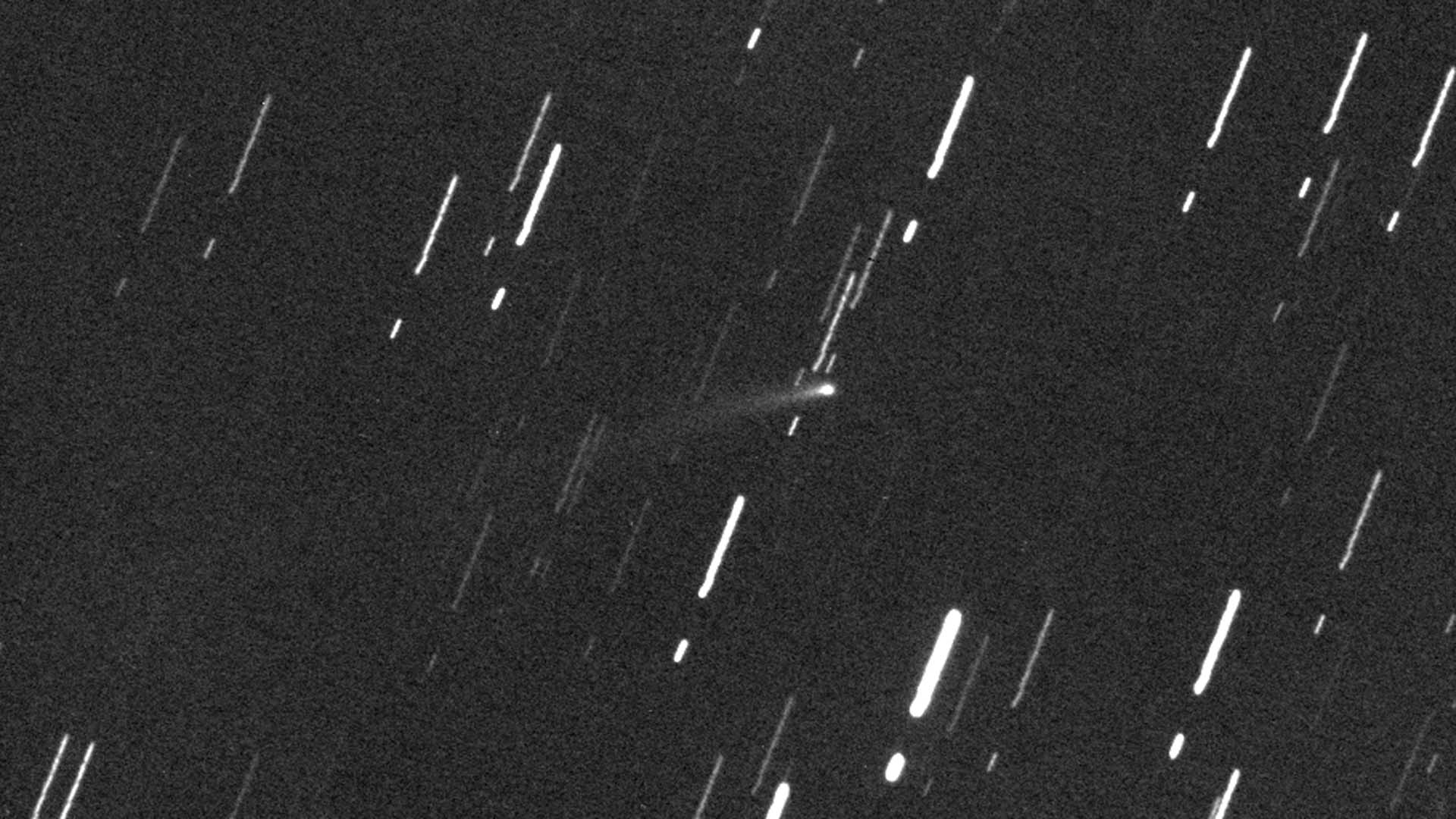Skywatchers across the United States and Canada are hoping for clear skies between midnight and dawn Saturday morning, May 24th, when a brand-new meteor shower — called the Camelopardalids — could potentially deliver hundreds of "shooting stars" per hour.
Contact:
Alan MacRobert, Senior Editor
855-638-5388 x2151 (work)
781-275-9261 (home)
[email protected]
| Note to Editors/Producers: High-quality graphics are at the end of this release. For more information about the meteor shower, please direct your readers/viewers to our online story for the general public. |
If celestial oddsmakers are right, North Americans will be treated to an impressive — and brand-new — meteor shower early on the morning of Saturday, May 24th (and very late Friday night on the West Coast). That's when Earth is predicted to pass through streams of debris particles shed long ago by a comet, creating an outburst of "shooting stars."
According to Sky & Telescope magazine, if you're viewing from a very dark location, free of light pollution, you might see anywhere from 100 to 200 meteors per hour (a couple a minute) if predictions pan out. But the possible outcomes vary widely: the display might be weak, with just a few dozen meteors visible per hour even in a dark sky — and there's also an outside chance that it could briefly become a "meteor storm," with more than 1,000 meteors visible per hour under ideal conditions.
Timing is Great for North America

Peter Jenniskens / SETI Institute
This sky-high spectacle likely won't last more than an hour or two. Its timing strongly favors all of North America. "The peak is most likely to come between about 2:30 and 3:30 a.m. Eastern Daylight Time," notes Sky & Telescope Senior Editor Alan MacRobert. That's roughly midnight Pacific Daylight Time, 1 a.m. Mountain Daylight Time, or 2 a.m. Central Daylight Time.
The source of these meteors is a small, obscure comet called 209P/LINEAR. Discovered in 2004, it circles the Sun every 5.1 years in a looping orbit that extends out to Jupiter. Each time it nears the Sun, the comet gets warm and releases many tons of gas, dust, and rubble. But the comet crumbs that will strike Earth's upper atmosphere on Saturday are not from this year's pass. Instead, dynamicists calculate that the comet shed them as long ago as the late 1700s and early 1800s.
There's lots of uncertainty about how strong the display will be. Comet 209P/LINEAR is active now, but that long ago it might not have been. The comet was not seen in the 18th, 19th, or early 20th centuries, when it ejected the particles that are about to collide with Earth.
In February 2012, the comet passed about 54 million miles from Jupiter. During that encounter, the giant planet's gravity tugged 209P/LINEAR — and presumably any cometary debris in its vicinity — into a slightly different orbit. The new path now comes even closer to us than it did before, missing Earth's orbit by just 280,000 miles (a little farther away than the Moon).
"We'll be seeing this shower for the very first time," MacRobert explains.
How and Where to Look
Watching a meteor shower requires no equipment; just use your eyes. Find a dark spot with an open view of the sky, sit in a reclining chair or lie on a blanket, and watch the stars. Meteors appear as brief streaks of light, a few bright and many more dim. They zip into view anywhere in the sky, so you'll want to look in whatever direction gives the darkest view.
If you follow the direction of each meteor backward far enough, you'll find that the lines appear to radiate from a spot in the northern sky near the North Star, Polaris. This spot, called the shower's radiant, lies in the dim constellation Camelopardalis (pronounced ca-meh-low-PAR-duh-lis), the Giraffe. For this reason, the new shower will be known as the Camelopardalids (ca-meh-low-PAR-duh-lidz).
"This radiant location is a celestial win," explains Robert Naeye, Sky & Telescope's editor in chief. "It means the shower should be visible, weather permitting, no matter where you are in the U.S. or southern Canada." Moonlight from a slender waning crescent won't be a problem, and some evidence suggests that the display could be rich in bright fireballs.
Sky & Telescope also provides an annual guide to other meteor showers visible during the year.

Sky & Telescope illustration

Sky & Telescope illustration

Gianluca Masi / Virtual Telescope Project
For more skywatching information and other astronomy news, visit SkyandTelescope.com or pick up Sky & Telescope, the essential magazine of astronomy since 1941. Sky Publishing (an F+W company) was founded in 1941 by Charles A. Federer Jr. and Helen Spence Federer, the original editors of Sky & Telescope magazine. In addition to Sky & Telescope and SkyandTelescope.com, the company publishes two annuals (Beautiful Universe and SkyWatch), as well as books, star atlases, posters, prints, globes, and other fine astronomy products.
 0
0